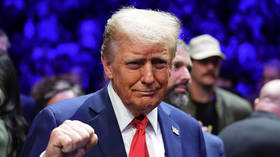Real Rwandan genocide & brainwashing of the Western mind
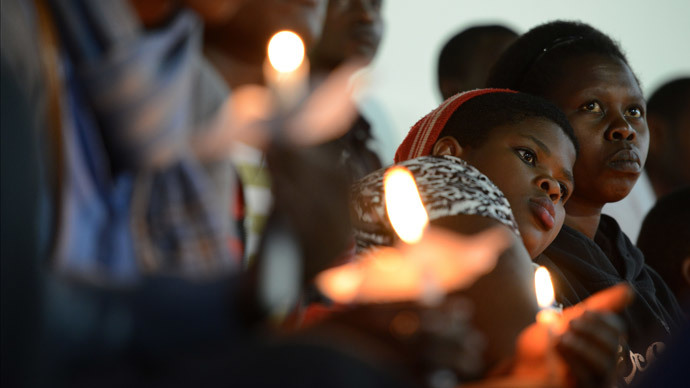
Every year in the first week of April Western media venues are flooded with stories that begin with statements about the anniversary of the Rwandan genocide, “where at least 800,000 ethnic Tutsis and moderate Hutus died at the hands of Hutu extremists.”
Such stories recount the official narrative about the ‘Genocide in Rwanda’, a narrative that has five or six key elements that have been almost canonized and are repeated robotically by Western English-speaking news consumers from all walks of life, economic classes, and political leanings.
1. At least 800,000 people killed;
2. Mostly ethnic Tutsis and moderate Hutus;
3. Slaughtered with machetes (and picks, hoes, adzes, other crude
tools);
4. It was meaningless tribal savagery;
5. Committed by Hutu extremists;
6. In 100 days of genocide;
7. We (Westerners) were ‘bystanders’ and did nothing.
These jingoistic phrases have been systematically cemented into the minds of Westerners through more than 20 years of insidious Western media propaganda, including the printed word, radio programs, still photographs, video and film, and they are generally reproduced ad nauseum by emergent ‘social’ media.
There is little truth to the official narrative.
‘Tutsis as victims, Hutus as oppressors?’
Twenty years after the pivotal events of 1994, it is time that Western media ‘news’ consumers – scholars, peace workers, academics, clergy, politicians, humanitarian aid workers, everyone – took responsibility for their own participation in the ‘Rwanda Genocide’ hysteria or, as it is, industry.
Let’s set the stage for the so-called ‘100 days of Genocide’ that purportedly began April 6, 1994, and purportedly ended July 15, 1994, in Rwanda. We can offer some critical facts that anyone who wants to mourn and sob about life and death in Rwanda ought to understand before they open their mouths and display sheer ignorance.
To begin with, ‘Hutu’ and ‘Tutsi’ are socio-economic and socio-political categories: these are not ‘tribes’. Most of the ‘Rwanda Genocide’ narrative is mythology relying on simplifications, stereotypes and reductionisms about Hutus and Tutsis as tribal savages. This stuff is right out of Tarzan movies.
Prior to the imperial occupation that began after 1890, ‘Tutsi’ kings ruled Ruanda-Urundi. ‘Tutsi’ cattle herders comprised some 20 percent of the population, ruling over the 80 percent ‘Hutu’ majority with egregious violence. First the Germans (to 1916) then the Belgians (to 1960) ruled ‘their’ colony by nurturing a ‘Tutsi’ power structure to exploit the ‘Hutu’ masses. The ‘Tutsi’ comprador class served the colonial occupation, where brutality, slavery and terrorism were used to keep the ‘Hutu’ masses in the fields. A ‘Tutsi’ could lose all his cattle and descend into the ranks of the peasant ‘Hutu’ agriculturalists and, though far less likely, a ‘Hutu’ could gain cattle and join the Tutsi elites. The colonial fathers issued ID cards, measured noses and cranial dimensions, and duly clarified who be ‘Hutu’ and who be ‘Tutsi’. There was, of course, much money to be made.
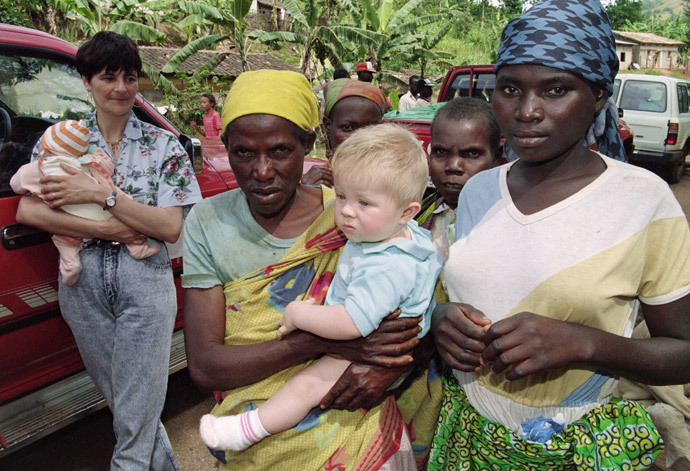
Witnessing the global ‘Third World’ independence (sic) movements of the 1950s, and supported by the Belgian Catholic priests, the ‘Hutus’ in Rwanda overthrew the ‘Tutsi’ monarchy in the ‘revolution’ of 1959-1960. Some people died, some people fled, some people stayed, and the next 30 years saw majority ‘Hutu’ rule, with Rwanda under constant attack by elite ‘Tutsi’ guerrillas.
Noting the winds of change, Belgium quickly swapped their support to the Hutu majority, established a comprador class of ‘Hutu’ elites, and protected their interests. There was, of course, much money to be made. Thousands of elite ‘Tutsis’ connected to the former power structure fled to Uganda, Tanzania, Europe and North America.
At the height of the Cold War, the elite ‘Tutsi’ refugees (sic) influenced the Non-Aligned Movement – newly-independent (sic) states like Brazil, India, Malaysia, etc. – screaming bloody murder and “We are the victims of imperial aggression!” all the while. This is the falsified history of ‘Tutsis’ as ‘victims’ inculcated by the arrogant elite ‘Tutsi’ rulers. These facts are key to the official narrative: Tutsis as victims, Hutus as oppressors.
Like any monarchy, the ‘Tutsi’ elites believe(d) they are God’s Chosen People, the Jews of Africa, the natural-born rulers over millions of Hutu (and Tutsi) peasants.
Adopted by the Non-Aligned Movement – funded, armed, trained outside Rwanda – the elite ‘Tutsi’ guerrillas attacked Rwanda throughout the 1960s and early 1970s, sowing the most egregious terrorism, usually under cover of night. Every time the ‘Tutsi’ guerrillas attacked Rwanda – whether from outside during the 1960s or from inside during the 1990s – the in-country French-speaking ‘Tutsis’ suffered reprisals. The ‘Tutsis as victims’ narrative continued to expand, and while the Hutus were blamed for atrocities, usually retaliatory, the ‘Tutsi’ were coddled and protected.
Guerrilla incursions involved bombings of cafes, nightclubs, bars, restaurants and buses. The very real suffering of the French-speaking ‘Tutsi’ people inside Rwanda – those who ‘stayed behind’ – was written off by the Rwandan Patriotic Front (RPF, a ‘Tutsi’ political party created in 1987 by the Tutsi refugee diaspora in Uganda, now the ruling party in Rwanda) as collateral damage. The English-speaking Ugandans, the elite ‘Tutsi’ refugees (sic), who had Ugandan citizenship and high posts in the Ugandan military, defined them as Hutu collaborators. The RPF didn’t care whether they lived or died.
The foreign element
Enter, by coup d’etat, the Hutu President Juvenal Habyarimana, who ruled Rwanda from 1973 to April 6, 1994, backed by France. Historically, France was to Africa what the United States was to Latin America. Britain and Portugal controlled a few protectorates, Belgium plundered the Congo and Ruanda-Urundi, but Francophone power in Africa was vast, deeply entrenched and militarily brutal.
Habyarimana ran a one-party dictatorship, but French-speaking Tutsis who stayed behind were able to achieve some economic status, though they were kept in check, given their small numbers. Of course, this wasn’t good enough for the elite ‘Tutsis’ outside Rwanda. The United States, Canada, Britain and Israel wanted more of the African pie, and Paul Kagame was the man to get it for them.
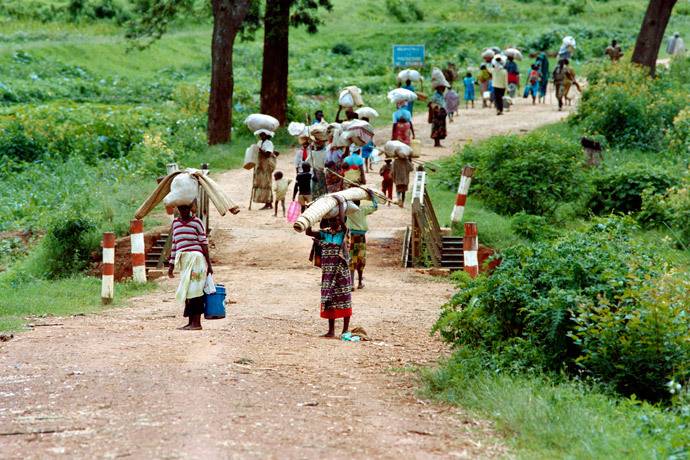
English-speaking ‘Tutsis’ who grew up in Uganda – Paul Kagame, James Kabarebe, Fred Rwigyema, Patrick Karegeya, Laurent Nkundabatware, and thousands of others – were the soldiers of Yoweri Museveni’s guerrilla army. They committed massive atrocities in Uganda, (1980-1985), where absolute terrorism was used to remove a socialist government run by an ungrateful African. The victims in Uganda were also blamed for genocide, turning the truth upside-down. This is how Museveni and Kagame – his director of military intelligence – brought Uganda back in line with the geopolitical dictates of the West: aka disaster capitalism. There was, of course, a lot of money to be made.
They burned entire villages. The RPF deceived peasants into coming to meetings only to obliterate them coldly. The RPF even created crematoriums to ‘disappear’ the skeletons and skulls, until they realized the efficacy of the model of the Jewish Holocaust death camp memorials: pile up shoes, clothing, skeletons and skulls; create an industry whose currency is the moral outrage and psychological terror of ‘genocide’. And please do not be confused: nothing is more terrifying to the Western psyche. (Of course, the same ‘device’ was created and used by the Museveni terror apparatus in the Lowero Triangle of Uganda, but it was preceded by Cambodia, where Pol Pot was the preeminent demon of the day, and the carpet-bombing, napalm strikes, or terror operations like Project Phoenix are dismissed.)
Media war
The New York Times led the charge into Rwanda, and the Western media continued to beat the ‘Tutsis as victims’ drum roll. There was, after all, a lot of money to be made. Wall Street vultures began drooling. Military and intelligence operatives like David Kimche (Israel) and Roger Winter (USA) jockeyed for position – organizing logistics, maintaining supply chains, arranging weapons shipments – to support ‘our’ man Kagame and our proxy guerrilla army, the RPF. The Washington Post, Boston Globe, CNN, the Observer all described the RPF guerrillas as a highly ‘disciplined’ army: if any woman was raped or civilian massacred, it was an accident, a rogue soldier, and said soldier would be duly punished (of course, they never were).
Paul Kagame put into practice what his teachers, the military strategists at the US Army Command and Staff College, Fort Leavenworth, Kansas (USA), taught him: psychological operations and how to overthrow a country.
As the English-speaking ‘Tutsis’ marched into Rwanda they conscripted and lured ‘Tutsi’ youth to the ‘freedom’ cause. These were young French-speaking Tutsis who were also subjected to Kagame’s ruthless modus operandi: many of them were tortured, killed, disappeared, but many survived the initiation into the RPF. Kagame and his elite Ugandan comrades didn’t trust Tutsis who had stayed behind, and they clearly sacrificed the French-speaking Tutsis of Rwanda for the cause of absolute military power.
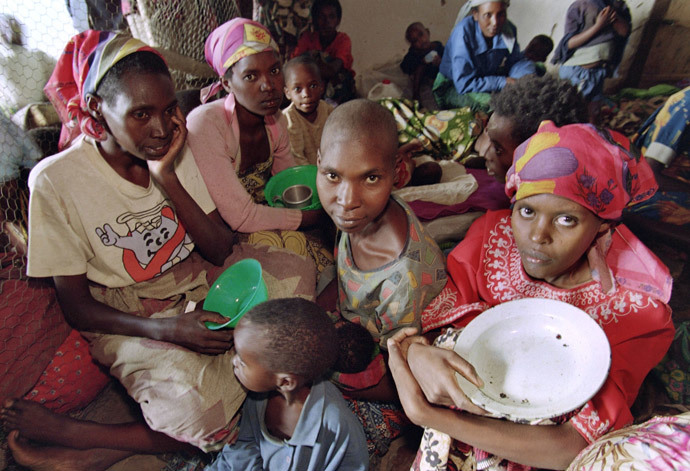
While the power of the Rwandan Patriotic Army grew day by day, supplied from Uganda, funded by World Bank loans to Museveni, the Habyarimana government was attacked on all fronts, shackled with debt, weapons blockades, demonized by the international press, the humanitarians (sic) and world opinion.
Meanwhile, next door in Burundi, the elite ‘Tutsi’-dominated regime committed a genocide in 1972: some 200,000 to 300,000 mostly Hutu people were raped, tortured, and massacred, while hundreds of thousands more fled to neighboring countries, including Rwanda. The preeminent Africa scholar Rene Lemarchand describes this as a genocide ‘denied and forgotten’.
Instead of punishing the invading ‘Tutsi’ Ugandan forces, led by Kagame, the world punished the Habyarimana regime: political pluralism, multiparty elections, peace accords assuring power-sharing for the RPF: no diplomatic or political sacrifice was enough. Meanwhile, Kagame and the RPF grew in strength and numbers, better equipped, better trained, striking under cover of night like cockroaches – Inyenzi – the term that Tutsi guerrillas of the 1960s proudly self-identified with.
Just as Museveni had infiltrated, massacred and terrorized Uganda (1980-1985), the RPF infiltrated soldiers disguised as civilians into Hutu villages, Hutu political parties, even into Hutu youth groups organized to defend Rwanda from the invading terrorist guerrillas. While the RPF used the airwaves to terrorize the people, scapegoat and stereotype enemies real and perceived, and whip up fear of ‘Hutu power’ – the same kinds of nasty propaganda, often sexualized, used by the Kagame regime to demonize its detractors from the West even today – we only even hear about ‘Hutu power’ hate radio.
April 6, 1994, President Habyarimana, his chief of staff, the president of Burundi, the French pilots – all murdered over Kigali in the surface-to-air missile attack on the presidential jet. Here is another pivotal world event that should be commemorated and remembered: the RPF assassination of two presidents.
The Western media soon began describing this terrorist action as ‘a mysterious plane crash’ and, using the now-entrenched upside-down narrative that defined ‘Tutsis’ the victims and ‘Hutus’ as killers, the double-presidential assassinations were blamed on Hutu ‘extremists’.
The United States blocked every attempt to investigate the ‘plane crash’ and the International Criminal Tribunal on Rwanda (ICTR) suppressed any evidence that emerged, even removing officials who touched the truth too closely. Kagame, all the while was crying crocodile tears, screaming “We are the victims of genocide,” confronting the West with its blatant ‘moral failure’ to abide the slogan ‘never again’.
Real Hutu extremists
What is a Hutu extremist? According to the official mythology, a ‘Hutu extremist’ is a Hutu who ruthlessly and coldly set out to wipe every Tutsi off the face of the earth. In reality, a Hutu ‘extremist’ was any Hutu who saw total war coming at the hands of their erstwhile elite Tutsi oppressors. A Hutu ‘extremist’ was someone who understood only too well that the elite ‘Tutsis’ invading from Uganda, the elite ‘Tutsis’ massacring thousands of people, the elite ‘Tutsis’ (read RPF) infiltrating of social, economic, military and political institutions in Rwanda, the elite ‘Tutsi’ Inyenzi bombings of public places and their assassinations of countless political figures and pesky Rwandan journalists, or the elite ‘Tutsis’ slaughtering of thousands of innocent Hutu men, women and children and wiping entire Hutu villages off the map, that these were very real certainties that Hutu’s had a right and necessity to defend themselves against.
What is a Hutu ‘moderate’? Any Hutu who believed that the RPF offered a democratic alternative to one-party dictatorship, that Paul Kagame was sincere in his proclamations of political pluralism, freedom and brotherhood. These were empty promises.
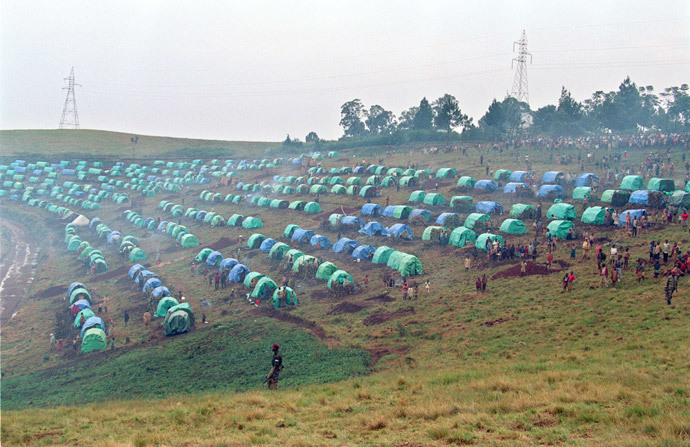
The genocide of the majority Hutu people, launched October 1, 1990, proceeded unabated during the RPF march to power in Rwanda, and it was even more clearly executed during the RPF hunting and slaughtering of hundreds of thousands of innocent men, women and children – mostly Hutus – in the Congo. These were organized campaigns of genocide, with intent to rape, murder and disappear Hutu people because they were Hutu people, and the perpetrators were the elite ‘Tutsis’ from Uganda.
No such planning or organization of genocidal intent has been proven against the Hutu government of Juvenal Habyarimana - which, in any case, was decapitated on April 6, 1994 - or against the Interim Hutu government that briefly held sway after April 6, 1994, and the judges at the ICTR have found as such. There were indeed hundreds of thousands of French-speaking Tutsis raped, brutalized and massacred in what amount to very real acts of genocide in Rwanda, and these occurred over the now sacred ‘100 days of genocide’. But there were also hundreds of thousands of Hutus killed, and far more Hutu than Tutsi.
Hutu lands were cleared of their owners, taken by foreign ‘Tutsi’ who flooded in on the heels of the RPF. And by the way, practically everyone in Rwanda owns a machete; there were massive imports in January of 1994, by a British citizen; purchases of machetes occurred using World Bank funds, for agricultural use, not for an evil genocide conspiracy. Anyway, the RPF routinely killed people with machetes, to save on bullets, and disguise the perpetrators.
And today, terror reigns silently in Rwanda.
Facts don’t seem to matter however, because Western hysteria has been whipped up by the media, the Pentagon, the intelligence sector, and by the Kagame regime. The Western psyche has been indoctrinated to believe exactly what Kagame and his benefactors want us to believe. We stood by, we did nothing, we should have stopped ‘the genocide’.
Nothing could be further from the truth.
There was a coup d’etat in Rwanda. The victors, the oppressors, the killers have been applauded, shielded, and/or hidden from the eyes of the world. A proxy army of elite ‘Tutsis’ murdered with abandon in Burundi, Uganda, Rwanda, and Congo, where they are still murdering with abandon.
The real coup d’etat has been the brainwashing of the Western mind and psyche, transforming rational discerning individuals into hysterical self-congratulatory humanitarians (sic), unable to separate truth from lie, and certain of their conclusions, no matter how erroneous. Just show them a machete, or a skull, or a weeping ‘Tutsi’ ‘survivor’ of ‘genocide’ and you can count on their compliance in commemorating the anniversary of ‘Genocide’ in Rwanda, and bowing at the feet of Paul Kagame. There is, of course, much money to be made.
Keith Harmon Snow, for RT
Keith Harmon Snow is a war correspondent and photographer who has worked in 16 African countries, including conflict areas in Congo, Ethiopia, Rwanda, Uganda and Sudan. A former genocide and war crimes investigator for Genocide Watch, Survivor's Rights International and the United Nations, who has worked at the International Criminal Tribunal on Rwanda, testified at numerous US immigration asylum hearings for Rwandan and Congolese refugees and testified at the Audiencia Nacionale in Madrid, Spain, in support of the war crimes, crimes against humanity and genocide indictments issued against the top 40 Rwandan Patriotic Front officers. He is persona non grata in Rwanda and Ethiopia.
The statements, views and opinions expressed in this column are solely those of the author and do not necessarily represent those of RT.








